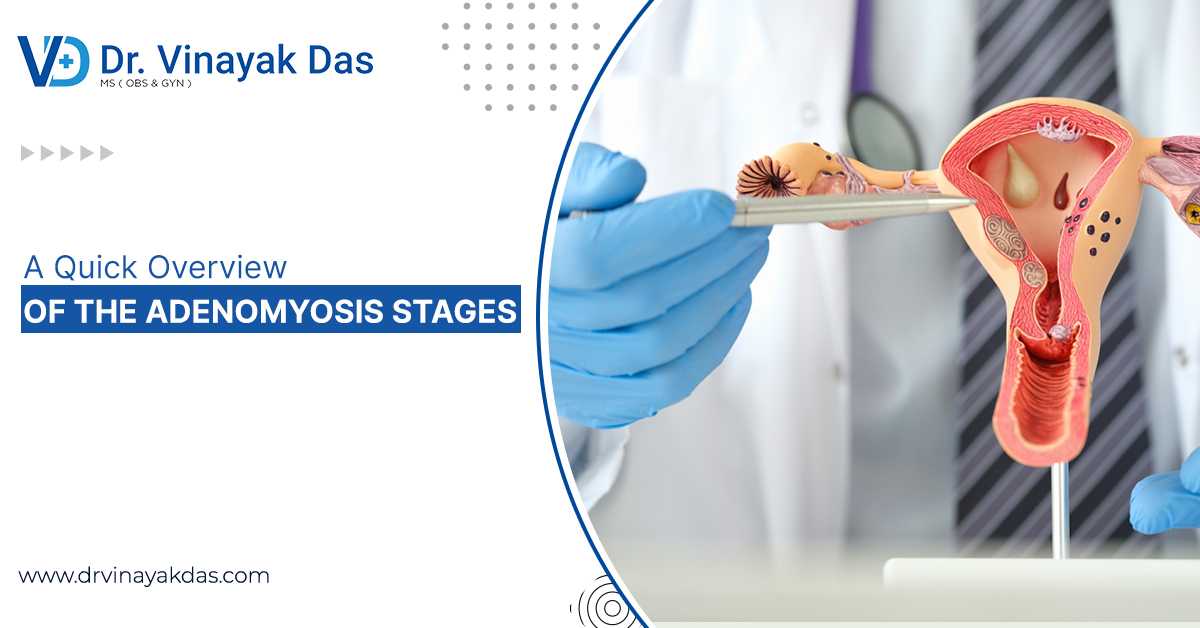Adenomyosis is a common gynaecological condition when the endometrial tissues grow abnormally into the uterine walls. This condition can increase the size of your uterus where it can also become double or triple the size of a normal uterus. Proper diagnosis and treatment at an early stage from the best gynaecologist in Siliguri is essential to minimize the chances of associated complications.
Some of the common complications that you can develop due to adenomyosis are anaemia and higher chances of pregnancy complications. If the abnormal tissue growth caused by the condition has progressed to an advanced stage then it can also be a contributing factor to infertility.
Given below is a detailed description of the 4 stages, symptoms, and treatment options of adenomyosis.
Stages
Adenomyosis is segregated into four stages which are differentiated through the tissue infiltration levels and symptoms. It is important for the doctor to identify the stage of the disorder to curate an effective treatment plan.
Stage 1: Early-
This is the first stage of adenomyosis when the infiltration of the tissues is minimal. Early detection in this stage by doctors is extremely challenging due to the presence of any noticeable symptoms. This is why it is essential for you to report any menstrual discomfort that will help the doctor to treat the condition.
Stage 2: Moderate-
As the disorder progresses to the second stage, the infiltration becomes deep which can affect most of the uterine tissues. The common signs that can indicate that adenomyosis has reached the second stage are severe menstrual pain and heavy bleeding during the menstrual cycle. Some of the additional symptoms may include pain during intercourse and bloating. You must contact a reputed gynae doctor in Siliguri to resolve this condition and stop the progression.
Stage 3: Severe-
Severe infiltration is involved in the third stage of adenomyosis. In this stage, the normal shape of the uterus can be distorted leading to major discomfort that can interfere with your daily life activities. Herein, you might notice a serious increase in menstrual flow and cramps.
Stage 4: Advanced-
When serious damage is done in the uterus with extreme infiltration, it is considered the advanced stage of adenomyosis. You may experience more serious symptoms during this stage which include painful intercourse, pelvic pain, and heavy bleeding. It is crucial to offer effective treatment to manage the associated complications and distressing symptoms.
Treatment Options
In most cases, the symptoms of adenomyosis go away after menopause but if it doesn’t go then you can avail of effective treatments to ease the distressing pain. One of the most effective medications that a doctor can prescribe is pain medications for pain management. Apart from this, certain non-hormonal and hormonal medications can also be prescribed to manage the abnormal menstrual cycle.
If you have excessive bleeding, then non-hormonal medications can reduce it. The doctor can also recommend surgical procedures if the condition has reached an advanced stage. Hysterectomy and adenomyomectomy are the most effective methods that can remove the abnormal tissues from your uterus. You must know the fact that after a hysterectomy, it won’t be possible for you to become pregnant again as it involves total removal of the uterus.
To determine the staging and treatment options for adenomyosis, the best gynaecologist in Siliguri will always perform certain beneficial diagnostic tests. Some such tests include MRI, pelvic exam, and transvaginal ultrasound to see the thickening and enlargement of the uterus due to the infiltrated tissues.




